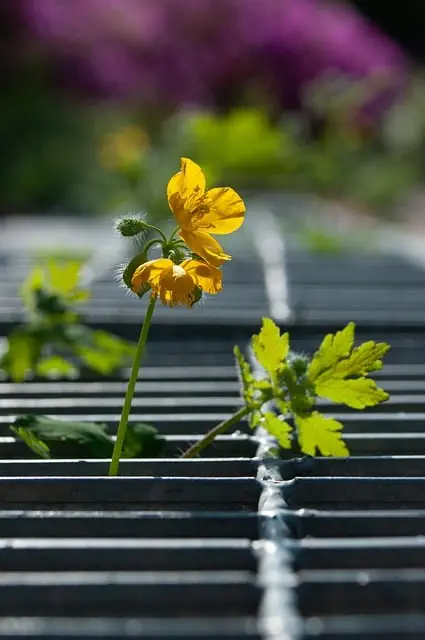Kratom, a plant native to Malaysia with historical military use, contains alkaloids like mitragynine and 7-hydroxymitragynine that interact with brain opioid receptors for pain relief and energy enhancement. These benefits are critical for military personnel facing physically demanding tasks. The cultivation of kratom in Malaysia combines traditional farming methods with modern practices, making it a leading producer globally. The unique climate of Malaysia's forests enhances the alkaloid potency of kratom buds, which is why they are so valued. Kratom's potential in the military context is being assessed for its adaptogenic-like properties that could improve soldier performance and readiness, highlighting the relevance of this traditional plant in modern military applications. The exploration of kratom within the military sector underscores its significance as a supplement with the potential to support the well-being and operational effectiveness of armed forces worldwide. Keywords: Kratom Military Benefits.
Explore the fascinating intersection of botany and military strategy through the lens of Malaysian Kratom Buds. This article delves into their historical significance, botanical composition, and the ethnobotanical insights that reveal their traditional uses, particularly within the Malaysian armed forces. Uncover how these buds, harvested from the rich biodiversity of Malaysia’s forests, have played a pivotal role in military history and are increasingly recognized for their applications beyond traditional practices. Join us as we explore the multifaceted impact of Kratom in the military sphere.
- Unveiling the Role of Malaysian Kratom in Military History and Cultivation Practices
- The Botanical Breakdown: Understanding Kratom Buds from Malaysia's Biodiverse Forests
- Ethnobotanical Insights: Malaysian Kratom's Traditional Uses and Modern Applications in the Military Sphere
Unveiling the Role of Malaysian Kratom in Military History and Cultivation Practices

Malaysian Kratom, a plant native to the Southeast Asian nation, has played a significant role in the military history and cultivation practices of the region. Historically, kratom leaves have been utilized by soldiers for their stimulating properties, which enhance endurance and stamina during long marches and missions. The alkaloids present in kratom leaves, particularly mitragynine and 7-hydroxymitragynine, interact with the opioid receptors in the brain, providing pain relief and a boost in energy levels. This has been particularly beneficial for military personnel who operate under physically demanding conditions.
The cultivation of kratom in Malaysia is deeply rooted in traditional agricultural practices, with farmers honing their techniques over generations to optimize yield and quality. These practices have been passed down through families and communities, ensuring the sustainability of kratom production. The military’s interest in kratom has also led to its careful cultivation in controlled environments, ensuring a consistent supply for both medicinal and military use. The integration of modern horticultural methods with these traditional practices has not only enhanced the quality of the kratom but has also contributed to Malaysia’s reputation as a significant producer of this unique plant.
The Botanical Breakdown: Understanding Kratom Buds from Malaysia's Biodiverse Forests

Malaysian Kratom, a botanical specimen of Mitragyna speciosa, hails from the diverse and rich forests of Malaysia, where it thrives in the wild. This evergreen tree is not only revered for its psychoactive alkaloids but also recognized for its significant role in the country’s natural heritage. The kratom leaves, commonly referred to as ‘buds,’ contain compounds such as mitragynine and 7-hydroxymitragynine, which have been the subject of interest within military circles for their potential impact on stamina, pain management, and cognitive function. The unique environmental conditions in Malaysia’s biodiverse forests, with their specific humidity and temperature, contribute to the exceptional potency of these kratom buds. These environmental factors influence the alkaloid composition and, consequently, the effects experienced by users. The intricate interplay between soil quality, microclimate, and the genetic makeup of the kratom plants results in a product that is sought after globally, not only for its medicinal properties but also for its potential use in military applications where endurance and mental clarity are paramount. Understanding the botanical breakdown of Malaysian Kratom buds requires a deep dive into the ecological nuances of their natural habitats, ensuring that any discussion on the topic is grounded in the scientific and environmental aspects of these remarkable plants.
Ethnobotanical Insights: Malaysian Kratom's Traditional Uses and Modern Applications in the Military Sphere

Malaysian Kratom, a plant native to Southeast Asia, has long been a subject of ethnobotanical interest due to its traditional uses and emerging applications, particularly within the military sphere. Historically, communities in Malaysia have utilized kratom, specifically Mitragyna speciosa, for its stimulant properties, traditionally chewed to alleviate fatigue and enhance endurance during laborious tasks. The leaves of this botanical, rich in mitraphylline and 7-hydroxymitragynine, have been a natural resource for energy and focus, often employed by local workers in agriculture and logging industries.
In modern times, the military has recognized the potential benefits of kratom for its personnel. The plant’s alkaloids are believed to offer adaptogenic-like effects, which can be advantageous for soldiers operating under extreme conditions. Kratom’s ability to mitigate pain and promote mental clarity may contribute to better performance in military operations, where high levels of alertness, resilience, and endurance are critical. The strategic use of kratom is being explored as a means to enhance physical and psychological readiness among troops. This exploration underscores the importance of traditional knowledge in informing contemporary applications and highlights the potential for kratom to play a role in the well-being and operational capabilities within the military domain.
Malaysia’s Kratom buds have long held a place of significance within the country’s biodiversity and historical military practices. This article has explored the intricate role these botanicals have played, from traditional uses to modern applications within the military sphere. The botanical insights reveal that Kratom’s effects have been both a resource for soldiers and an object of study for its potential benefits. As we conclude, it is clear that Malaysian Kratom continues to be a subject of interest due to its unique properties. The ethnobotanical value it holds, coupled with its historical military relevance, underscores the importance of preserving these natural resources while exploring their applications responsibly.






